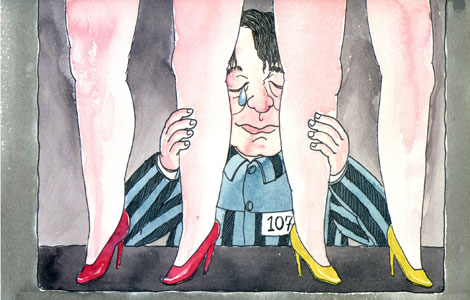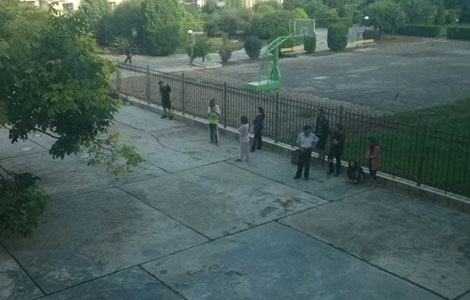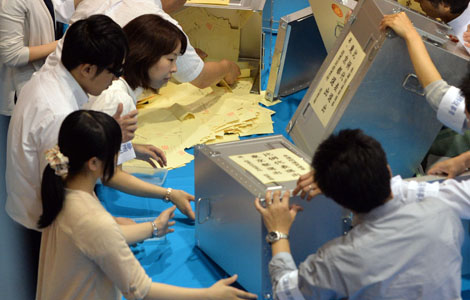Land reclamation boosts rehabilitation of mining areas
Updated: 2013-07-22 15:32
(Xinhua)
|
||||||||
GUIYANG - Land reclamation is helping reverse the environmental costs exacted by years of mining in China's "mercury capital", located in the southwestern province of Guizhou.
Li Laidi, a retiree from the mercury mine located in Wanshan District, Tongren city, remembers the days of mined-out zones collapsing here and there, as well as the landslides that resulted from mine slag during the rainy season, which destroyed one-third of the area's arable land.
Now, however, the retiree is seeing changes taking place, with ecological industrial parks recycling mercury waste, potassium resources being built up and former wastelands getting replanted with vegetation.
Wanshan is a prime example of how China is transforming its wastelands in mining areas.
The nationwide reclamation rate has climbed from 2 percent in the 1980s to 25 percent on the heels of technological advances.
Wu Haiyang, director of the land reclamation center with the Ministry of Land and Resources (MLR), said the nation's 112,300 mines have been gnawing away at arable land at a rate of 3 million mu (about 200,000 hectares) annually.
"Arable land that has been damaged by all kinds of mining make up over 60 percent of overall ruined land, while wastelands are the main reasons behind soil contamination, environmental degradation and the loss of biological diversity," Wu said at an ecological forum held in Guizhou from July 19 to 21.
With these issues in mind, the State Council, China's cabinet, approved the national Land Restoration Plan 2011-2015 in March 2012, in which the nationwide land reclamation ratio is expected to reach 35 percent of land damaged in the course of production or other historical factors.
- China furthers uranium mine drilling depth
- Four officials under probe over fatal mine blasts
- Mine blast deaths hidden, report finds
- Coal mine found concealing blast death toll
- 12 dead in coal mine warehouse collapse
- Pingyao holds coal mine safety speech contest
- Mining enterprise led to river pollution
Most Viewed
Editor's Picks

|

|

|

|

|

|
Today's Top News
Knife attack injures 4 in Beijing
Yuan gains 34% against USD in past 8 years
Live Report: 54 dead, over 300 injured in quake
Hard landing of China economy no topic at G20
US Navy drops bombs on Australia's reef
Woman jailed in Dubai after reporting rape
Guangdong to probe airport bomber's allegations
Police meets GSK representative after scandal
US Weekly

|

|














